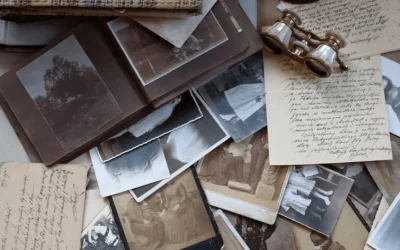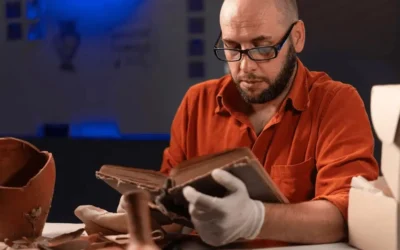Archival Values and Use
Margot Note
Archivist T. R. Schellenberg originated the appraisal concepts of evaluating the evidential and information value of records. Although he focused on administrative records, his appraisal concepts can be applied to all records as archivists determine their value and potential use.
Evidential and Informational Values
Evidential value refers to the evidence the records contain of the organization that produced them and its functions. Information value applies to the information they hold on the “things” which the government body dealt with. Schellenberg proposed that records be assessed for evidential values, mainly if they were records on origins and substantial programs, with different recommendations given for summary narrative accounts, policy, public relations, publicity, and internal management.
Tests for informational values include uniqueness (of the information and the records that contain the information), form (of the information in the records and the records themselves), and importance, applied on groups of records containing information on persons, things, and phenomena.
In providing these guidelines for archival materials, Schellenberg disregards research value or use, which he believed was subjective and easily justified. Instead, he is concerned with making records useful to researchers through systematic analysis of evidential or informational value.
Primary and Secondary Uses
Values can also be applied to archivists to differentiate them from creators and users. Whereas creators and users see records as a means to an end, or the primary use, archivists see many applications: the secondary uses. Secondary value, of course, includes evidential or informational value. This secondary value is often unforeseen by the creator of the records, but placed upon them by others later who see multiple ways in which the records can be used to study history. This value is long-lasting and enduring and, therefore, in its essence, archival.
Archival records exist for research, and are not merely saved for their own sake. Some records should be preserved long after their primary purpose, and they should be preserved completely and coherently with a context. They should be organized promptly and administered equitably and impartially, with sensitive information protected.
Does Use Determine Value?
Archivist Mark Greene builds upon these theoretical issues to provide the “Minnesota Method” for analyzing the validity of use as an appraisal criterion, which questions the very nature of what archives are. The method has five documentation levels in order of importance. For lower documentation levels, the archivist must decide what will satisfy the most user needs with the least space and least effort. Greene states that use is a measurement of value and the overall success of an archival program. Appraisal considers use, as well as the repository’s mission and resources.
Archivists as Users
Archivists may be among the most critical users of their own archives, particularly as intermediaries for other users. Using the archives so comprehensively gives an archivist a more profound sense of what is both valuable and useful. Implementing use analysis, for example, allows archivists to predict how beneficial they think records are based on past usage patterns. Archivists should also balance access issues, such as physical, legal, and format, to determine if they will impede use.
If a collection is referred to repeatedly, its use determines its value. In my experience as an archivist, I have created finding aids for particular collections and selected records to digitize based on use. Use was often the only way I knew that my colleagues—my primary users—felt that specific records are useful. As a lone arranger, I saw that my own usage patterns (based on queries submitted by others) helped locate the most valuable records, the ones that I returned to repeatedly.
In that sense, the utilization of materials begat better access tools, which resulted in even more use. Use and value can be depicted as the ancient symbol of the ouroboros, a serpent eating its own tail, as records of enduring value continue to demonstrate their value by being used.
Margot Note
Margot Note, archivist, consultant, and author is a guest blogger for Lucidea, provider of ArchivEra, archival collections management software for today’s challenges and tomorrow’s opportunities. Read more of Margot’s posts here, and get your free copy of Margot’s whitepaper, Digital Sustainability: the Archivist’s Path Forward.
Similar Posts
Texas Archive of the Moving Image: Interview with the Digital Archivist
I recently interviewed Grace Muñoz about her work at the Texas Archive of the Moving Image. Her work on improving the discoverability of the multimedia collection is fascinating.
How to Conduct Comprehensive Archival Surveys
Conducting a comprehensive archival survey is critical to successfully managing archival collections.
Remembering History, Moving Forward Together, with ArchivEra
The Catholic Diocese of Arlington’s Director of Archives selected ArchivEra to manage their collections of historical and cultural significance, and strike a balance between security and access.
Unveiling Archival Impact
The transformative power of storytelling depends upon the strategic choices that top archival performers make and the shift from being record-keepers to change agents.




Leave a Comment
Comments are reviewed and must adhere to our comments policy.
0 Comments